CRE Grad Receives Award
Emma Whittington, recent CRE graduate, was awarded the 2019 Alexander Gourevitch Memorial Award in Biology by the Biology Department at Syracuse University! This award is bestowed on a recent PhD graduate from the Department of Biology in recognition of excellence in research. Her name will be engraved on a plaque with previous awardees, which is on public display in the Department of Biology. In addition, she will be awarded a monetary gift and a medallion from the Department. Congratulations Emma! Richly deserved!
Research experience for NYS high school teachers and students
CRE Postdoctoral Fellow, Dr. Erin McCullough, led NSF-supported Research Experience for Teachers (RET) and Research Assistantships for High School Students (RAHSS) summer programs that included summer research experiences for two New York state high school teachers and their students. They developed genomics teaching modules that have been incorporated into the classroom as part of the Broader Impacts of an NSF award to Steve Dorus, Scott Pitnick, Mariana Wolfner and Jason Wiles. The educational module will be published in the May 2020 issue of the journal American Biology Teacher.
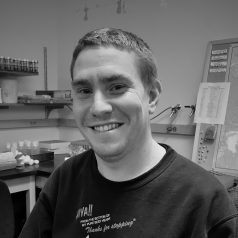
Welcome Dr. Garlovsky!
Dr. Martin Garlovsky joins the CRE as a Postdoctoral Fellow to investigate the evolutionary genomics of speciation and reproductive trait evolution. Martin recently received his PhD from the Department of Animal and Plant Sciences, University of Sheffield, UK, working with Professor Rhonda Snook. Welcome aboard, Martin!

Welcome Kethry Warren!
We welcome our new Laboratory Technician, Kethry Warren to the CRE! She will work primarily with Dr. Ahmed-Braimah.
Dr. Whittington joins the Natural History Museum of Oslo, Norway
CRE alumnus, Dr. Emma Whittington, begins her new position as a Postdoctoral Fellow at the Natural History Museum of Oslo. Congratulations and good luck, Emma!

Emma successfully defends her dissertation!
CRE graduate student, Emma Whittington, successfully defended her dissertation. Congratulations Dr. Whittington!
Nearly all members of the CRE travel to Stockholm, Sweden to attend the 15th biennial Biology of Spermatozoa (BoS) Conference. Fantastic meeting!
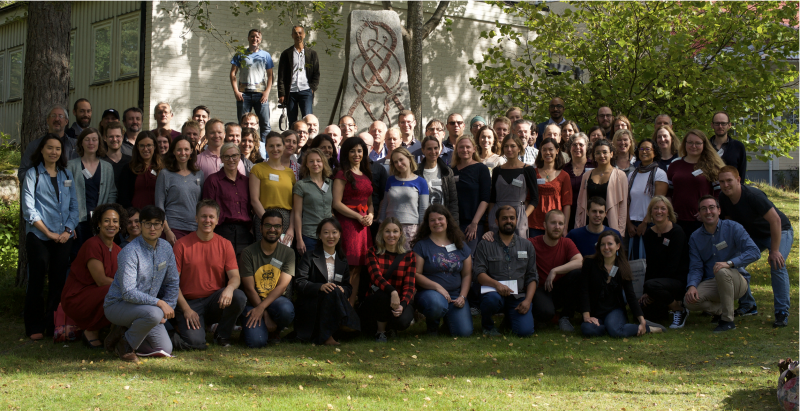

Kirill takes new position at Mt. Sinai
CRE Postdoctoral Fellow, Kirill Borziak, begins new position as IT Program Manager, designing bioinformatic solutions for large-scale genomic data, for the Icahn School of Medicine at Mt. Sinai. We wish Kirill the greatest success!

Welcome Dr. Yasir Ahmed-Braimah!
Dr. Yasir Ahmed-Braimah, an expert in evolutionary genomics and speciation genetics, joins the SU Department of Biology as an Assistant Professor and joins Belote, Dorus and Pitnick as a Principle Investigator of the CRE. We could not be more excited!
Summer Undergraduate Poster Presentation
Three summer undergraduates, Lauren Woolner, Stephanie Nguyen, and Henry Middleton, presented their research at the Summer Research Symposium at the ESF Gateway Center on August 8th.
Lauren Woolner
Title: Comparative Analysis of Copulatory Courtship Among Drosophila Species
Lauren, alongside postdoc Erin McCullough, has video-recorded and annotated all of the Drosophila species’ copulatory courtship behaviors thus far.
She has taken great pride and exceptional interest in her project, and plans to continue working in the lab through the Fall ’19 and Spring ’20 semesters.
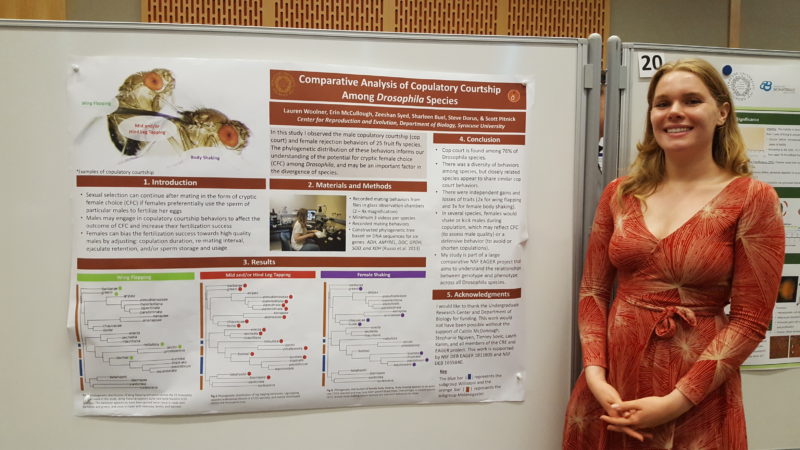
Funding sources: NSF DEB, NSF EAGR, Undergraduate Research Center, SU Biology Department
Stephanie Nguyen
Title: Correlation of Longevity and Fecundity in Drosophila
Stephanie has been working in the lab from Fall ’18 through this summer. She has been involved with several aspects of research here, but this summer she has mainly been involved with measuring the longevity and fecundity of the Drosophila species. She takes great care of the flies, enjoys training new students, and cleaning up the lab.
Stephanie plans to continue doing research in the lab during the Fall ’19 and Spring ’20 semesters.
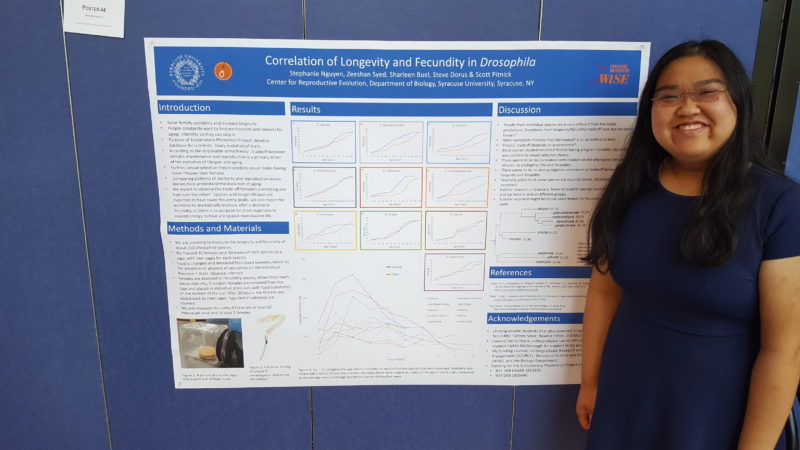
Funding sources: NSF DEB, NSF EAGR, Women in Science and Engineering, Undergraduate Research Center, SU Biology Department
Henry Middleton
Title: Microbiome patterns in Aedes aegypti mosquitoes transinfected with Wolbachia
Henry is a transplant from Cornell University, where he is going into his Junior year as a Computer Science Major. He has been working with Jane Pascar, a second year graduate student in the CRE, on a project looking at Wolbachia infections in mosquitoes. Henry has quickly picked up multiple computer languages, contributes greatly to lab meeting discussions, and shows an interest in applying his computer science skills to biological analyses.
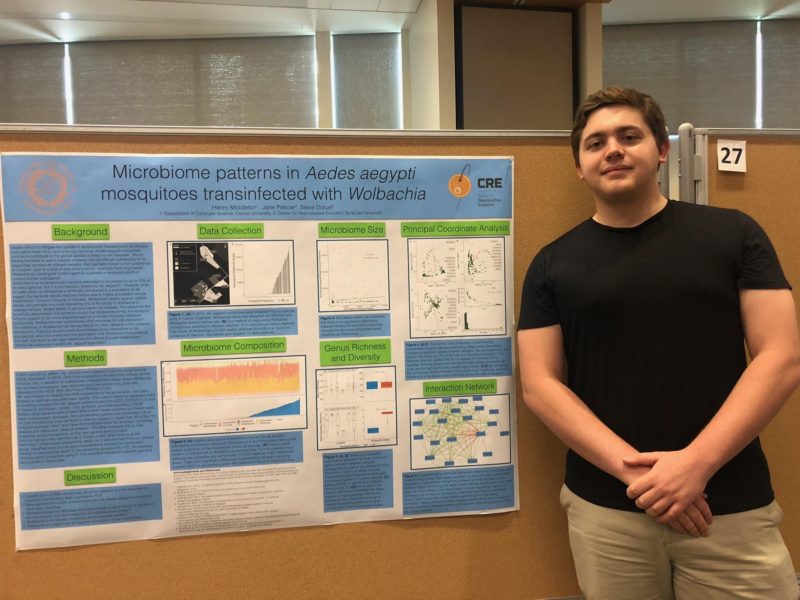
Volunteer

